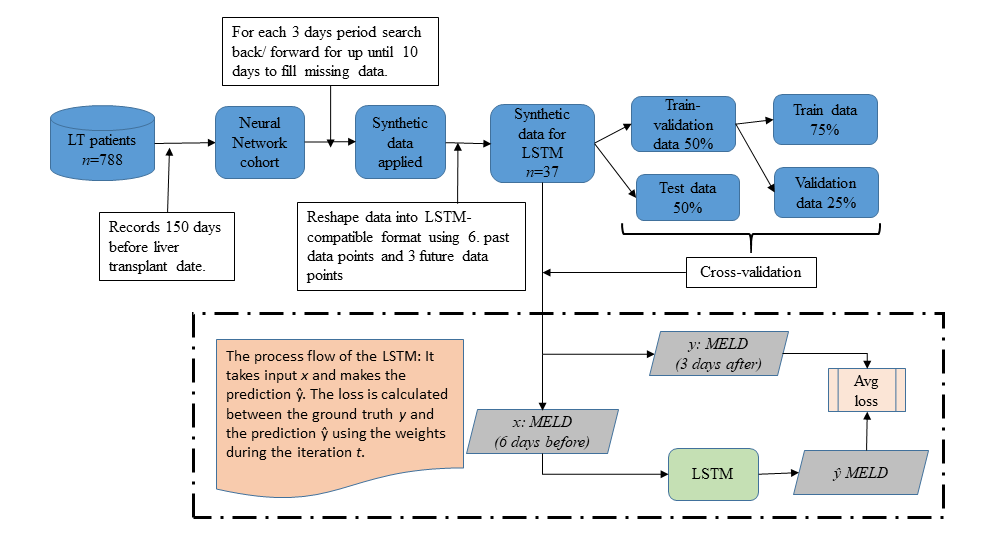Artificial Neural Network Application for MELDNa Prediction
1University of Minnesota, Minneapolis, MN, 2Cleveland Clinic Foundation, Cleveland, OH
Meeting: 2021 American Transplant Congress
Abstract number: 1182
Keywords: Liver, Liver transplantation, Prediction models, Waiting lists
Topic: Clinical Science » Liver » Liver: Large Data and Artificial Intelligence
Session Information
Session Name: Liver: Large Data and Artificial Intelligence
Session Type: Poster Abstract
Session Date & Time: None. Available on demand.
Location: Virtual
*Purpose: The adoption of MELDNa decreased 90-days mortality on patients waiting for liver transplant (LT); however, there are no tools available to predict MELDNa trajectories progression over time. We aim to predict MELDNa for patients at any time on the waiting list based on previous scores; thus, providing additional resources for transplant centers and organ reallocation and provide patients’ estimated MELDNa progression. A stacked Long Short-Term Memory (LSTM) was applied to predict the next MELDNa for individual patients.
*Methods: A retrospective cohort of patients who underwent LT from 2006 and 2019 was derived from UMN Clinical Data Repository that includes electronic health records from the M Health Fairview. Data includes demographic, medical diagnoses, billed procedures, laboratory results, medications, notes, and flowsheet measures for >2.5 million patients. Cohort selection, data preparation steps, and modeling is shown in the figure below. We build the model by stacking 2 layers of LSTM models. The model’ parameters are optimized using Keras Tuner, and performance measured using R2 and MSE. Data management and analysis was performed inside the Minnesota Super Computing using Python 3.0.
*Results: The LSTM model has R2 of 0.64 and MSE of 0.03 suggesting current and previous MELDNa scores are able to explain 64% the next MELDNa at a certain point time, with an error between expected and predicted of 3%. Applying LSTM to a given MELDNa of a cohort of patients, we can use the past 6 days MELDNa to predict future 3 days MELDNa scores with reliable accuracy.
*Conclusions: In this model, we use optimized numbers to demo model performance and show the potential for MELDNa prediction while on the waiting list. The number of past data points and future data points could be optimized for maximum model performance or pre-selected, depending on practical demands. In the near future, based on the current state (including other factors, such as health status, comorbidities) of the patient, we will be able to optimize a model in a way that can predict how much MELDNa will change and how fast the change will take place with high accuracy. A model able to predict MELDNa over time could influence waiting list management, organ allocation and patient engagement into their own care, while estimating resources allocation and care delivery.
To cite this abstract in AMA style:
Pruinelli L, Nguyen M, Olson S, Zhou J, Schold J, Pruett T, Ma S, Simon G. Artificial Neural Network Application for MELDNa Prediction [abstract]. Am J Transplant. 2021; 21 (suppl 3). https://atcmeetingabstracts.com/abstract/artificial-neural-network-application-for-meldna-prediction/. Accessed December 28, 2025.« Back to 2021 American Transplant Congress

